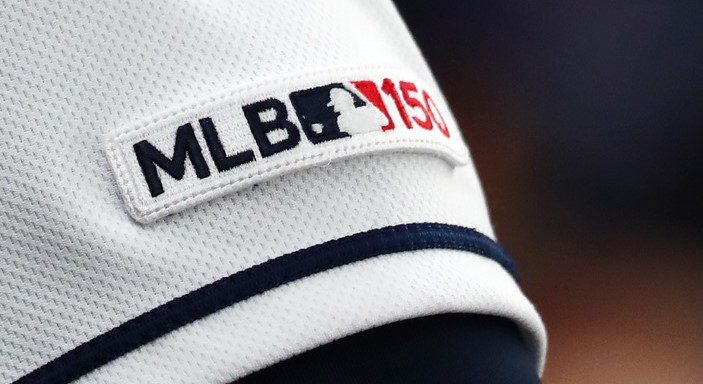In the ever-evolving landscape of Major League Baseball (MLB), a silent revolution has been taking place over the past two decades. The rise of analytics has fundamentally altered the way teams approach every aspect of the game, from player evaluation and recruitment to in-game strategies and long-term planning. This shift towards data-driven decision-making has not only changed the way baseball is played but has also reshaped the very fabric of the sport. Let’s dive deep into these impacts of analytics reshaping MLB teams.
The Rise of Analytics in Baseball
The origins of baseball analytics can be traced back to the early work of pioneers like Bill James in the 1970s and 1980s. However, it wasn’t until the early 2000s, with the publication of Michael Lewis’s “Moneyball,” that the broader baseball community began to take notice of the potential impact of advanced statistics on team success. The Oakland Athletics, under general manager Billy Beane, demonstrated that a small-market team could compete with financial powerhouses by leveraging data to identify undervalued players and exploit market inefficiencies.

Since then, analytics has permeated every level of MLB organizations. Teams have invested heavily in building robust analytics departments, hiring data scientists, statisticians, and computer programmers to gain a competitive edge. This influx of analytical talent has led to the development of increasingly sophisticated metrics and models that go far beyond traditional baseball statistics.
One of the most significant impacts of analytics on MLB team strategies has been in the area of player evaluation. Traditional scouting methods, while still valuable, are now complemented by a wealth of statistical data. Teams use advanced metrics like Weighted On-Base Average (wOBA), Fielding Independent Pitching (FIP), and Defensive Runs Saved (DRS) to assess player performance more accurately. These metrics provide a more nuanced understanding of a player’s contributions, often revealing value that might be overlooked by conventional statistics.
The influence of analytics is particularly evident in the way teams approach player development. Minor league systems have become laboratories for data collection and analysis, with teams tracking everything from pitch velocities and spin rates to bat speeds and launch angles. This wealth of information allows organizations to identify areas for improvement in young players and tailor development programs to maximize their potential.
Analytics
Driven Strategies on the Field In-game strategies have been dramatically affected by the analytics revolution. The increased emphasis on on-base percentage and slugging has led to a change in offensive approaches, with many teams prioritizing power hitting and walks over traditional small-ball tactics. This shift has contributed to the rise in home runs and strikeouts across the league in recent years.
Pitching strategies have likewise been transformed by analytics. The use of data has led to more specialized roles for pitchers, with teams increasingly relying on bullpen arms for shorter, high-intensity outings. The concept of “openers” – relief pitchers starting games before giving way to longer-inning pitchers – is a direct result of analytical insights into pitcher effectiveness and lineup optimization.
Defensive positioning has been another area significantly impacted by analytics. The rise of the infield shift, where teams dramatically realign their defensive players based on a batter’s tendencies, is perhaps the most visible manifestation of data-driven strategy on the field. Teams now have access to detailed spray charts and batted ball data, allowing them to position fielders with unprecedented precision.
The impact of analytics extends beyond on-field strategies to encompass areas such as injury prevention and recovery. Teams use biomechanical data and advanced imaging techniques to identify potential injury risks and develop personalized training and recovery programs for players. This data-driven approach to player health has the potential to extend careers and improve overall team performance by reducing time lost to injuries.
Controversies and Future Outlook
While the benefits of analytics in MLB are clear, the widespread adoption of data-driven strategies has not been without controversy. Critics argue that the emphasis on analytics has led to a homogenization of playing styles across the league, potentially making the game less exciting for fans. There are also concerns about the impact on traditional baseball roles, with some fearing that the human element of the game – the intuition of seasoned scouts and managers – is being devalued.
Despite these concerns, the analytics revolution in MLB shows no signs of slowing down. As technology continues to advance, new frontiers in data collection and analysis are emerging. Statcast, MLB’s state-of-the-art tracking technology, provides teams with an unprecedented level of detail about every play, from the spin rate of pitches to the exit velocity of batted balls. This wealth of data is driving further innovations in strategy and player evaluation.
For fans and analysts looking to dive deeper into the world of baseball analytics, there are numerous resources available. As highlighted in the Knup Sports article “Best Baseball Resources for Analytics,” websites like FanGraphs, Baseball Prospectus, and Baseball Savant offer a wealth of advanced statistics and analytical tools. These platforms provide fans with access to many of the same metrics and data visualizations used by MLB teams, allowing for a deeper understanding and appreciation of the game’s strategic nuances.
The Data-Driven Future of America’s Pastime
The impact of analytics on MLB team strategies has been profound and far-reaching. As teams continue to refine their analytical approaches and new technologies emerge, the evolution of baseball strategy is likely to accelerate. While the fundamentals of the game remain unchanged, the way teams approach every aspect of baseball has been irrevocably altered by the power of data. The teams that can best harness this analytical revolution will likely be the ones holding up the World Series trophy in the years to come.









